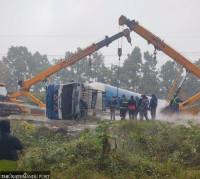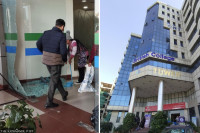National
Central Bureau of Statistics estimates 750 people living in the Kalapani area
The population count in Kalapani, Lipulekh and Limipiyadhura was conducted in ‘informal ways’, officials say.
Post Report
The Central Bureau of Statistics has estimated that the population in the Lipulekh, Limpiyadhura and Kalapani areas could be around 750 as the census could not be conducted there with the physical presence of enumerators.
“The population in the region is around 750,” an official at the Central Bureau of Statistics, who was involved in the census in the region, told the Post. “Information about the population in the region was collected through informal channels such as taking information from people of the bordering region with relatives in the region, Nepali migrant workers and Nepali security agencies.”
Hemraj Regmi, deputy director-general at the bureau, said that the population of the Kalapani area is in the range of 500-700, without specifying the exact number.
The bureau on Wednesday unveiled its preliminary data of the 12th national census conducted last year. According to the bureau, Nepal’s population stands at 29,192,480.
After the sixth national census in 1961, people living in the Lipulekh, Limpiyadhura and Kalapani areas have not been counted.
The region has been claimed by India as its own for decades. But in 2020, Nepal published its own map to include Lipulekh, Limpiyadhura and Kalapani within the Nepali territory.
India has taken exception to Nepal’s move. The region has become a source of constant irritation in Nepal-India ties, with no solution in sight.
When the Central Bureau of Statistics started preparing for the census last year, there were concerns how the Nepalis living in the region would be counted.
The bureau had said it would use some “indirect methods” to count Nepalis living there. The region is remote and there is no direct road link via Nepal to reach there.
Nepal failed to send enumerators to the region for the census but officials at the bureau said that they conducted the census in an informal way.
“Nepal’s new population figure has also incorporated the population of the Kalapani region,” said Regmi. “We will now try to verify the number of houses located there through satellite images.”




 12.12°C Kathmandu
12.12°C Kathmandu












%20(1).jpg&w=300&height=200)

